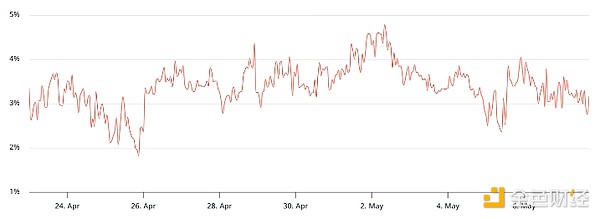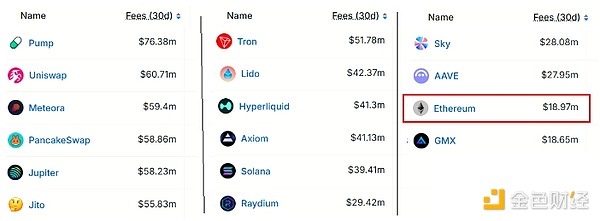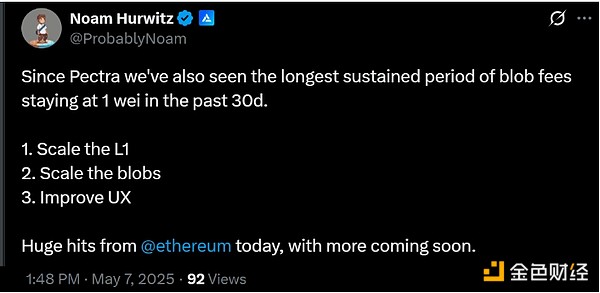Author: Marcel Pechman, CoinTelegraph; Compiler: Deng Tong, Golden Finance
Summary
Returning to the $2,200 level remains the primary price challenge for ETH.
If the Pectra upgrade can drive a surge in DApp and Ethereum network activity, ETH prices could recover.
Ethereum successfully implemented a key network upgrade on May 7, but the ETH price and its derivative indicators reacted flatly to the upgrade. This lackluster market reaction surprised traders and caused analysts to question whether ETH still had a real chance of rising 22% and returning to the $2,200 level.

Ethereum 30-day futures annualized premium. Source: Laevitas.ch
ETH futures premium has been below the neutral threshold of 5%, indicating a lack of interest from leveraged longs. More importantly, after the Pectra upgrade, the indicator remained unchanged at 3%, indicating that traders did not adjust their positions despite the successful deployment of the upgrade.
The muted market reaction was due in part to investors’ focus on macroeconomic issues as uncertainty over global trade disputes heightened the risk of a recession. But traders’ lack of interest in ETH predates the recent deterioration in risk aversion. In fact, ETH underperformed the broader cryptocurrency market cap by 28% in the first three months of 2025.
Pectra’s lackluster price performance following the upgrade reflects widespread market discontent as competing blockchains have gained traction. Solana's monthly active addresses compared to Layer-1 competitors. Source: Token Terminal Historically, high Ethereum base layer fees may have limited network activity, but since mid-February, these fees have fallen below $1. In addition, Ethereum's leading Layer-2 solution Base currently has 10.3 million monthly active users, far less than Solana's 82.2 million and BNB Chain's 25.9 million, according to Token Terminal.
Ethereum lags in DApp interoperability — will this hurt ETH’s price?
Solana has dominated the decentralized exchange space by providing an integrated user experience, especially in token issuance. Similarly, Hyperliquid has outperformed expectations in perpetual contract trading, indicating that traders’ main concerns are not limited to Ethereum’s decentralization and security. Meanwhile, Tron has made significant progress in the stablecoin market.

Blockchain and DApp 30-day fees (USD). Source: DefiLlama
Ethereum remains undisputedly the leader in total value locked (TVL) at $53.7 billion. However, this hasn’t done ETH holders much good, as network fees have been relatively low at $19 million over the past 30 days, according to DefiLlama. In comparison, Tron has collected $51.8 million in fees over the same period, while Solana has collected $39.4 million.

Alchemy engineering lead Noam Hurwitz noted that Ethereum blob fees have dropped to their lowest level since the Pectra upgrade. For Hurwitz, Ethereum’s success depends on underlying scalability, including further improvements to the Rollup mechanism, and ultimately a more seamless user experience.
Connecting assets and data across the Ethereum Layer-2 ecosystem has always been a challenge, and users on Solana and BNB Chain can easily switch between multiple decentralized applications (DApps). While the Pectra upgrade is a step in the right direction, it does not solve this problem, which explains why ETH has not been able to recapture the $2,200 levels of early March.
For ETH’s price to rise 22% from its current $1,810 level, investors may need to ensure that the network’s progress (whether through deposits or Layer-2 growth) can translate into clear returns. Ultimately, staking yields need to be increased or stronger incentives provided to drive wider adoption of DApps, which in turn would stimulate increased demand for ETH in the ecosystem.
 Weatherly
Weatherly







